Pale Moon web browser review
Date: 2021-07-09

"Pale Moon is an Open Source, Goanna-based web browser available for Microsoft Windows and Linux (with other operating systems in development), focusing on efficiency and customization." --
-- "Pale Moon offers you a browsing experience in a browser completely built from its own, independently developed source that has been forked off from Firefox/Mozilla code a number of years ago, with carefully selected features and optimizations to improve the browser's stability and user experience, while offering full customization and a growing collection of extensions and themes to make the browser truly your own." -- Moonchild Productions[1]
I've been using the Pale Moon web browser since 2013. My original reasoning then was mostly superficial. I wasn’t fond of the Firefox version 29 release, which introduced a re-design of the interface known as "Australis." I sought out for an alternative, which at that time there were many. Some would include minor modifications to set themselves apart from the rest, but eventually I would settle on Pale Moon for the next 8 years.
Here are some of the things that sets Pale Moon apart.
The user interface
It's difficult to recall the number of times Firefox has undergone a complete re-design of the user interface. It probably wasn’t that many, but it's of little concern unless it becomes apparent for no good reason. Meanwhile Pale Moon has mostly retained its composure in this regard.
It's also refreshing to see that by default Pale Moon will integrate with the desktop system GTK and icon themes, allowing it that native desktop application integration. You can also customize the browser theme if you would prefer something a little different.
It is possible through themes to make Pale Moon look like Netscape, if that suits your fancy.
Click on image to see full screenshot
The preferences interface is presented in its own separate window, retaining a traditional approach to modifying application preferences.
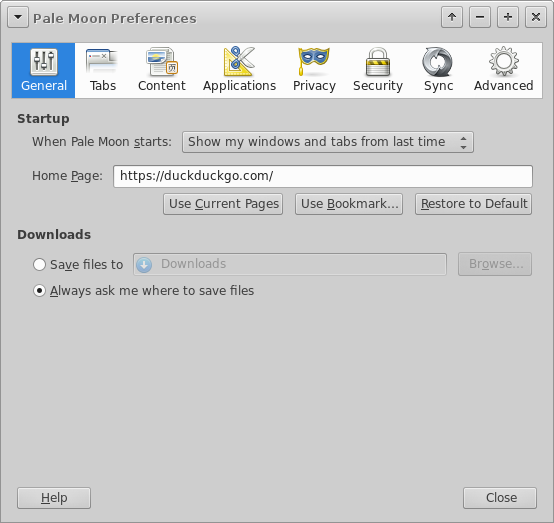
Click on image to see full screenshot
The overall interface is much more refined for web browsing than most others, albeit there are still some improvements that could be made.
It has become common place to emphasize a rigid functionality in modern user interfaces to appease an illiterate user base, eroding the overall usability and potential while neglecting those with advanced requirement and higher expectation. Pale Moon at least provides a fair middle ground in this regard, especially made possible through the extensibility of its extension platform.
Notable features
• The security padlock
A notable feature of the address bar is the security padlock. It provides some benefit by indicating the level of validation for a site.
Normal site:

Secure site:

Secure site with extended validation:

Mixed content:

Low-grade encrypted:

Broken encryption:

• List all tabs overview
There is a tab overview called "List all tabs" present on the tab bar. Clicking this will present an interface with a preview of each tab opened. This is a nice usability feature that can improve narrowing down a particular tab either by its thumbnail or by search.
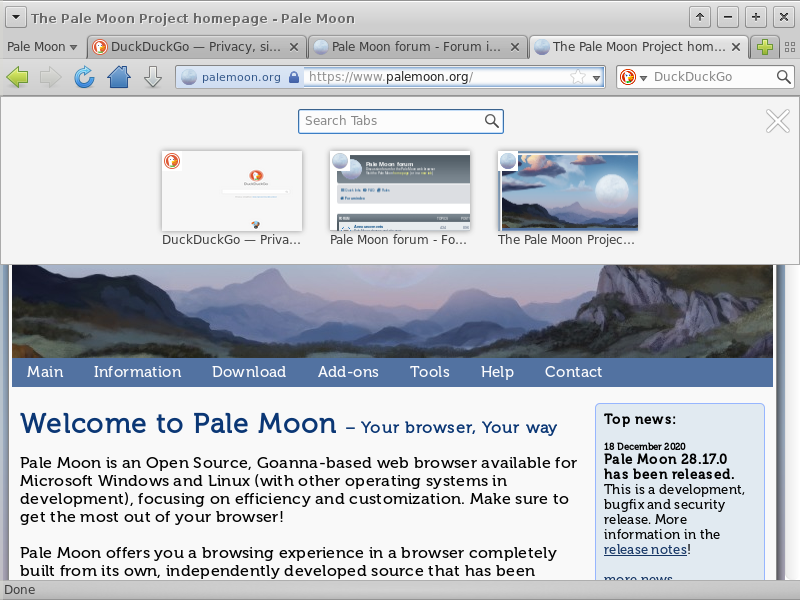
• Live bookmarks
If you were a fan of live bookmarks, they are still here in Pale Moon!

• Pale Moon Sync
A synchronization service is provided as a free courtesy to users that wish to synchronize their bookmarks, history, passwords, and some preferences between separate Pale Moon clients.
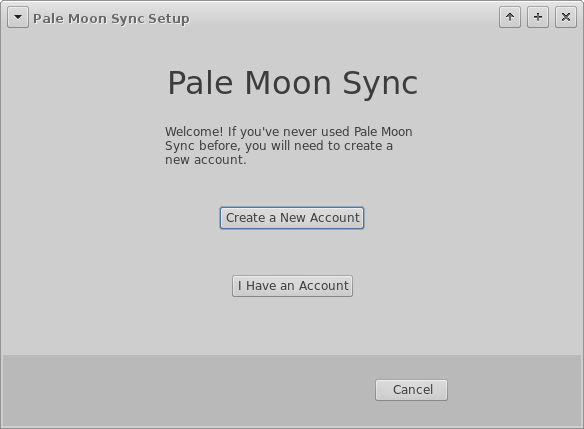
• Site Specific User Agent Override
(SSUAO) - This could be considered a feature, albeit an unfortunate one. The Web is yet again rapidly abandoning its agnostic approach, diving headlong into a future determined solely by proprietary industry standards. As a consequence, it has brought about a monoculture of permitted web browsing clients, denying those such as Pale Moon the opportunity to participate.
In some cases, non-permitted clients are outright blocked. With SSUAO, users are able to create their own User Agent strings for individual domains, changing the identity of the client to a permitted string and subverting basic forms of blocking. It's an inelegant solution to mitigate an inelegant situation.

Extensions
There is a number of extensions available to choose from for Pale Moon. A few notable extensions are ηMatrix for white-listing web content and Stylem for applying custom style sheets to web pages.
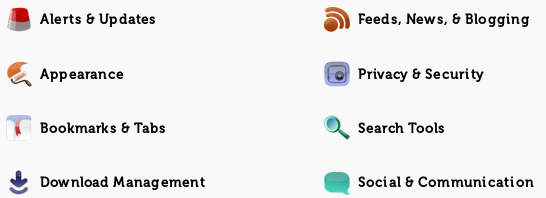
An issue often brought up about Pale Moon in regards to extension availability is a lack of more mainstream support, such as LastPass or browser based VPN clients. Another more recent occurrence has been the gradual deprecation in cross-compatability support with legacy Firefox targeted XUL based extensions. At some point ceasing support for an unmaintained ecosystem of extensions from days gone by was inevitable.
Limitations
The Pale Moon browser project has encountered increased difficulty with supporting the new Web (or modern web.) This encompasses primarily progressive web apps, DRM locked sites, server side blocking of client user agents, and those that step outside the bounds of standard principals into utter nonsense.[2]
As a user, you may find Pale Moon a frustrating browser for your run of the mill web apps. You may be unable to sign into your banking accounts, stream videos and music from media sites, play a video game, or even access some sites altogether. It is after all a web browser, nobody said it was an operating system!
Availability
You can find Pale Moon available for both Microsoft Windows[3] and GNU/Linux[4] based operating system distributions.
Windows
- Windows 7 x86 and x64
- Windows 8.1 x86 and x64
- Windows 10 x86 and x64
Third party GNU/Linux based distribution builds
- Manjaro
- PCLinuxOS
- Puppy Linux
- MEPIS/MX-15
- Gentoo Overlays
- Slackbuilds
- TinyCore Linux
Third party GNU/Linux contributor builds
- Steve Pusser - Debian and Ubuntu OBS
My Pale Moon configurations
The following are a few customization's that I apply to my Pale Moon profile to make it a little more usable. From your address bar, type “about:config” to open the browser configuration.
Sometimes you'll come across a web page that will change the style of your scroll bar. This can become frustrating because there are often times where the scroll bar is made invisible unless hovered by a pointer, the scroll bar itself made so thin that it’s difficult to grab, and more often than not the scroll box steppers are removed. The following configuration should alleviate that.
layout.css.scrollbar-width.enables = false
The current default behviour of the address bar when clicked upon is to auto-select the URI. This auto-selecting will immediately update the X11 primary selection clipboard contents, potentially clearing out something you may have previously selected and were intending to paste.
The following configuration should alleviate this.
browser.urlbar.clickSelectsAll = false
browser.urlbar.doubleClickSelectsAll = false
Smooth scrolling effects rarely looks well on web browsers. The “smooth” effect is often broken by dreadful web design that loads additional content upon page scrolling. It's best to just disable it.
general.smoothScroll = false
If you use a dock bar for managing your application tasks, you may have noticed that launching Pale Moon from a pinned icon produces an additional icon.

If this behavior irritates you, then you could do the following to fix it.
Open a terminal and open the Pale Moon ".desktop" launcher file with your editor of choice (I prefer VIM.) Depending on however you installed Pale Moon, you may or may not have a “.desktop” launcher file.
sudo vi /usr/share/applications/palemoon.desktop
Locate the line for "StartupWMClass" and make sure to capitalize the letter “P” and to remove the quotes encapsulating the value of Pale moon (It should look exactly like the below example.)
StartupWMClass=Pale moon
It should now start up as seen in the below GIF.

Thanks for reading.
References
2. https://forum.palemoon.org/viewtopic.php?f=1&t=24004
3. https://www.palemoon.org/download.shtml
[Return to top]


